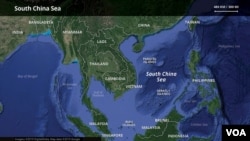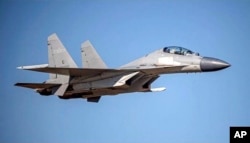Australia Defense Minister Richard Marles says Australia will continue to exercise its right of passage through the South China Sea despite opposition from China.
The South China Sea is one of the world’s most disputed regions.
Most of it is claimed by China, but surrounding countries and the United States disagree.
The sea is a critical gateway for global shipping. It is reported to have significant reserves of undiscovered oil and gas, which analysts have said has been “an aggravating factor in maritime and territorial disputes.”
The South China Sea is bordered by Brunei, Cambodia, China, Indonesia, Malaysia, the Philippines, Singapore, Taiwan, Thailand and Vietnam.
Australia has economic interests in the region and has promoted freedom of trade and navigation.
Canberra has conducted airborne surveillance operations in the South China Sea and Indian Ocean. Called Operation Gateway, the missions have been running since 1980.
Australian defense minister Richard Marles Sunday met his Chinese counterpart Wei Fenghe in Singapore. Relations between the two countries have been strained in recent years over various political and trade disputes, including Beijing’s ambitions in the South China Sea. Sunday’s dialogue at a regional security summit in Singapore was the first high-level bilateral meeting in more than two-years.
Marles said he planned to rebuild the relationship a “step at a time” and has insisted that Australia would continue to fly over the South China Sea despite a Chinese jet intercepting and damaging an Australian air force plane with aluminum chaff in May.
Tom Corben is a research associate in the foreign policy and defense program at the University of Sydney’s U.S. Studies Centre.
He said Canberra is standing firm against Chinese belligerence.
“The incident is significant because it is the latest example - and perhaps the most brazen — in a series of close encounters between Australian and Chinese military assets across the region over the past 18 months. Altercations like this underscore the coercive turn in China’s regional behavior, but they also highlight the fact that Taiwan is not the sole military flashpoint in the region. Indeed, Australia and other countries worry about the significant risks that such recklessness on China’s part could escalate from an instance of confrontation to one of conflict,” said Corben.
Defense Minister Marles has flown to Japan to meet his Japanese counterpart, Defense Minister Nobuo Kishi, to cement what Australian officials have described as a “relationship of affection.”
Australia has called for stronger military ties between Canberra and Tokyo.
Australia’s defense minister has also confirmed the recently-elected center-left government in Canberra will continue to impose tough border measures and that boats carrying asylum seekers will be turned back by the Australian navy.










